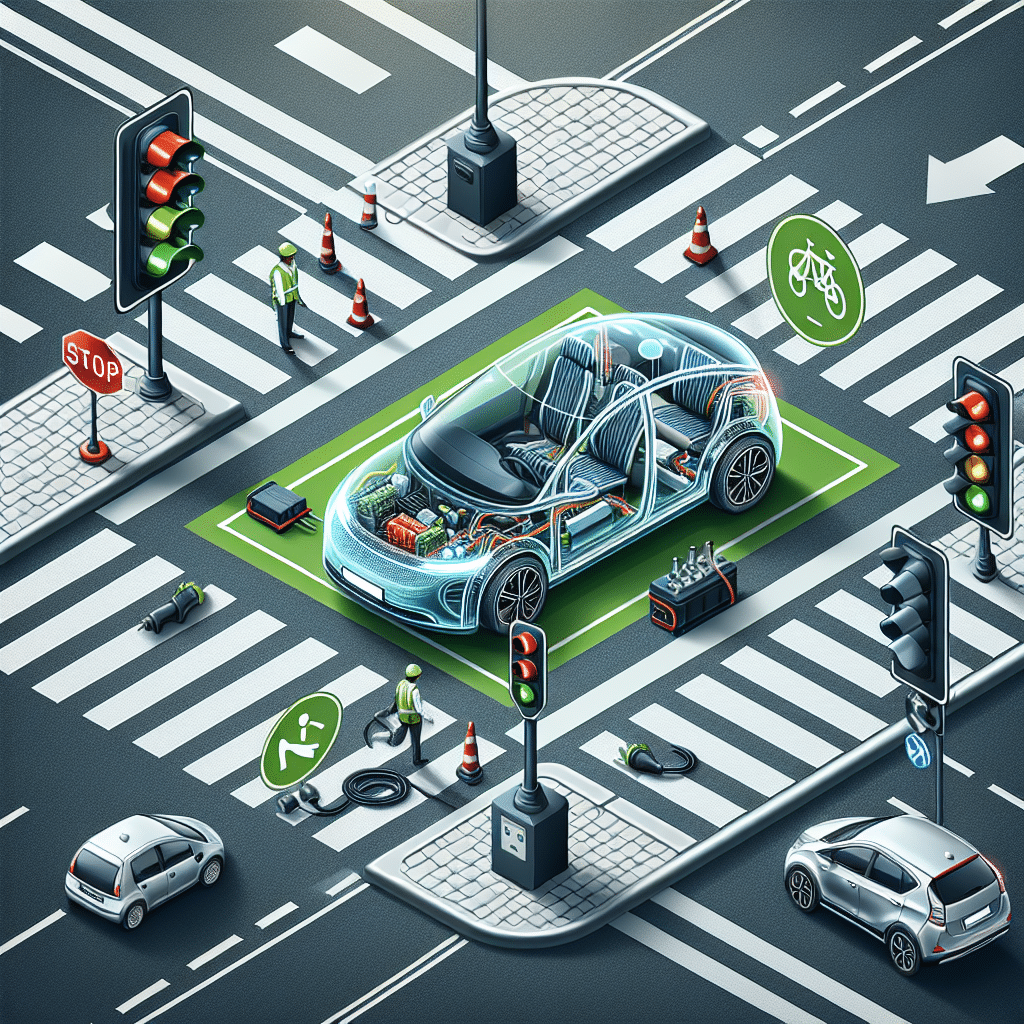Safety Tips for Electric Vehicle Owners
Understanding Your Electric Vehicle (EV)
Electric vehicles (EVs) use electric motors powered by rechargeable batteries. Understanding this fundamental difference from traditional gas-powered cars is crucial for their safe operation. Familiarize yourself with your EV’s user manual, as it contains vital information about its operation, features, and safety protocols.
Battery Safety
-
Charging Safety: Always use the right charger. Verify compatibility with your vehicle’s specifications to avoid overheating or damaging the battery.
-
Avoid Overcharging: Most EVs come with built-in protections, but it’s good practice to unplug the vehicle once it’s fully charged to extend battery life and prevent potential issues.
-
Check for Damage: Regularly inspect the battery and charging system for any signs of wear, corrosion, or physical damage. If you notice anything unusual, consult your dealer.
-
Temperature Awareness: Batteries are sensitive to extreme temperatures. Store and charge your vehicle within the temperature ranges recommended in the user manual.
-
Emergency Shutdown: Familiarize yourself with how to safely disconnect the battery in case of an emergency situation.
Fire Safety Precautions
-
Recognizing Risks: Electrical fires can occur if the charging system is damaged. Look out for signs such as burning smells or unusual noises when charging.
-
Installation of Fire Extinguishers: Consider keeping a Class C fire extinguisher in your garage or at charging locations. This type is designed to extinguish electrical fires.
-
Avoid Flammable Materials: Store your EV away from flammable materials or environments that could facilitate a fire.
Charging Practices
-
Home Charging Station: If installing a home charging station, hire a certified electrician. Proper installation reduces risks associated with electrical faults.
-
Outdoor Charging Precautions: Ensure that any outdoor charging units are waterproof and designed for external use to prevent electrical faults caused by moisture.
-
Supercharge Wisely: When using fast chargers, situate the vehicle in a well-ventilated area. This allows heat generated during very rapid charges to dissipate effectively.
Vehicle Maintenance
-
Regular Inspections: Schedule periodic check-ups with a certified service provider specializing in EVs. Regular maintenance will help identify potential issues before they become severe.
-
Brake and Tire Health: Electric vehicles often don’t wear tires and brakes as quickly due to regenerative braking systems, but a routine check is essential. Properly inflated tires enhance handling and safety.
-
Software Updates: Keep your vehicle’s software up to date. Manufacturers frequently release updates that enhance vehicle performance and safety features.
Road Behavior and Safety
-
Silent Operation: EVs are quieter than gasoline vehicles, making it crucial to be alert while driving, particularly in residential areas. Utilize pedestrian awareness features if equipped.
-
Visibility Campaigns: Some jurisdictions require EVs to have sound emitters. Consider adding audible warnings if operating in areas with high pedestrian traffic.
-
Defensive Driving: Practice defensive driving. Anticipate the actions of other drivers and pedestrians, and maintain a safe distance to avoid accidents.
Eco-Friendly Driving Tips
-
Efficiency Awareness: Smooth acceleration and braking maximize battery efficiency, extending range while reducing wear on vehicle components.
-
Use Energy Saving Modes: Many EVs come with driving modes that enhance energy efficiency. Becoming familiar with these settings can improve both safety and vehicle longevity.
-
Optimize Settings: Utilize settings such as climate control judiciously. Keeping your cabin at a moderate temperature uses less battery, increasing your driving range.
Emergency Preparedness
-
Emergency Kit: Equip your EV with an emergency kit that includes a flashlight, first-aid items, basic tools, and jumper cables designed for electric vehicles.
-
Roadside Assistance: Enroll in a roadside assistance program that specializes in EVs to ensure you have access to services that can handle electric vehicle-specific issues.
-
Incident Reporting: Familiarize yourself with the appropriate protocol for reporting accidents involving EVs. Understanding local laws regarding battery incidents can provide guidance in emergencies.
Community Engagement
-
Join EV Clubs: Connect with local EV owner clubs. These communities often share valuable tips and experiences that enhance safety and enjoyment.
-
Participate in Safety Workshops: Look for local workshops on EV safety, charging practices, and maintenance. Education fosters a safer driving environment for all.
-
Advocate for Charging Stations: Engage in dialogue with local policymakers to advocate for more safe, reliable public charging infrastructure. A well-distributed charging network enhances overall safety for EV drivers.
Eco-Friendly Practices
-
Battery End-of-Life Procedure: Understanding and following correct disposal and recycling practices for electric vehicle batteries helps prevent environmental damage and reduces safety hazards.
-
Educate Others: Share safety knowledge with friends and family. By increasing awareness about EV safety, you contribute to a safer driving environment for everyone.
Conclusion-less Call to Action to Stay Vigilant
By implementing these safety tips, electric vehicle owners can enjoy their eco-friendly ride with peace of mind. Always prioritize awareness and education to cultivate a safe driving experience for all EV operators and pedestrians alike.
